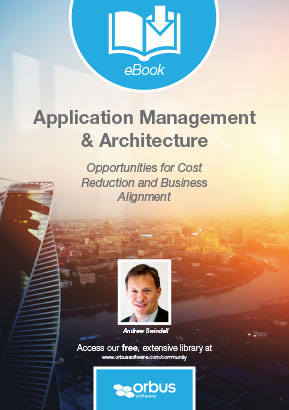This eBook explores governance models for your Application Portfolio, including critical support functions such as vendor management and contract management.
We have all seen Application environments where the number of seats / licenses being charged by vendors does not reflect the number of actual users. You also may have been overwhelmed by the number of CRM systems, Document Management systems, ERP, collaboration tools or data sources that need to be consolidated and optimized. Maybe your Application environment has hundreds of interfaces that are moving data all over your environment, but restricts your ability to be agile and responsive to market change. Or perhaps you’re in a situation where extensive scoping effort is required for a project, and adds significant costs and effort to identify and untangle the spaghetti.
These issues are a significant drag on your agility and ability to respond to a changing customer profile and market opportunities. CIOs and technology teams do not need to look much further than their existing IT function to see if Applications are being actively managed, owned and governed across the Portfolio, or if Projects and business units make all the calls on what Applications are introduced into the environment.
Most companies have a significant embedded cost of past business decisions and poor Application Governance, and are endeavouring to turn back 20-30 years of complexity. CIO’s are endeavouring to balance the need to fix the old and leap frog to the new digital world in their Application Portfolio planning and business stakeholders ask “Why has this been allowed to happen?”
In this eBook, Andrew Swindell describes why and how the Application Portfolio Management function is a critical lever for CIO’s to reduce your IT costs and improve alignment with your key business stakeholders. He outlines the key elements of Application Portfolio Management and explore approaches that highlight how creating some discipline in your Application Portfolio will reduce costs and gain the support of your business stakeholders.
